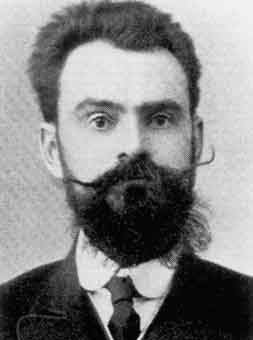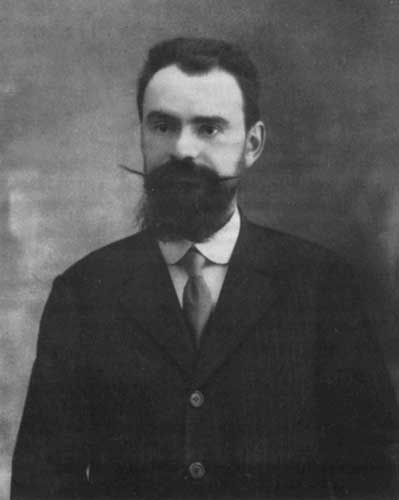.
Federigo Enriques

Federigo Enriques
Federigo Enriques (5 January 1871 –14 June 1946) was an Italian mathematician, now known principally as the first to give a classification of algebraic surfaces in birational geometry, and other contributions in algebraic geometry.
He was born in Livorno, and brought up in Pisa, in a Jewish family of Portuguese descent. He became a student of Guido Castelnuovo, and became an important member of the Italian school of algebraic geometry. He also worked on differential geometry. He collaborated with Castelnuovo, Corrado Segre and Francesco Severi. He had positions at the University of Bologna, and then the University of Rome La Sapienza. He lost his position in 1938, when the Fascist government enacted the "leggi razziali" (racial laws), which in particular banned Jews from holding professorships in Universities.
The Enriques classification, of complex algebraic surfaces up to birational equivalence, was into five main classes, and was background to further work until Kodaira reconsidered the matter in the 1950s. The largest class, in some sense, was that of surfaces of general type: those for which the consideration of differential forms provides linear systems that are large enough to make all the geometry visible. The work of the Italian school had provided enough insight to recognise the other main birational classes. Rational surfaces and more generally ruled surfaces (these include quadrics and cubic surfaces in projective 3-space) have the simplest geometry. Quartic surfaces in 3-spaces are now classified (when non-singular) as cases of K3 surfaces; the classical approach was to look at the Kummer surfaces, which are singular at 16 points. Abelian surfaces give rise to Kummer surfaces as quotients. There remains the class of elliptic surfaces, which are fiber bundles over a curve with elliptic curves as fiber, having a finite number of modifications (so there is a bundle that is locally trivial actually over a curve less some points). The question of classification is to show that any surface, lying in projective space of any dimension, is in the birational sense (after blowing up and blowing down of some curves, that is) accounted for by the models already mentioned.

Federigo Enriques
No more than other work in the Italian school would the proofs by Enriques now be counted as complete and rigorous. Not enough was known about some of the technical issues: the geometers worked by a mixture of inspired guesswork and close familiarity with examples. Oscar Zariski started to work in the 1930s on a more refined theory of birational mappings, incorporating commutative algebra methods. He also began work on the question of the classification for characteristic p, where new phenomena arise. The schools of Kodaira and Igor Shafarevich had put Enriques' work on a sound footing by about 1960.
See also
* Enriques surface
Works
* Enriques F. Lezioni di geometria descrittiva. Bologna, 1920.
* Enriques F. Lezioni di geometria proiettiva. Italian ed. 1898 and german ed. 1903.
* Enriques F. Lezioni sulla teoria geometrica delle equazioni e delle funzioni algebriche. Bologna, 1915-1934. Volume 1, Volume 2, Volume 3-4
* Severi F. Lezioni de geometria algebrica : geometria sopra una curva, superficie di Riemann-integrali abeliani. Italian ed. 1908 and german ed. 1921
* Castelnouvo G., Enriques F. Die algebraischen Flaechen// Encyklopädie der mathematischen Wissenschaften, III C 6
* Enriques F. Le superficie algebriche. Bologna, 1949
Links
* O'Connor, John J. & Robertson, Edmund F., "Federigo Enriques", MacTutor History of Mathematics archive
* PRISTEM page (Italian language)
* Official home page of center for Enriques studies (Italian language)
Retrieved from "http://en.wikipedia.org/"
All text is available under the terms of the GNU Free Documentation License


